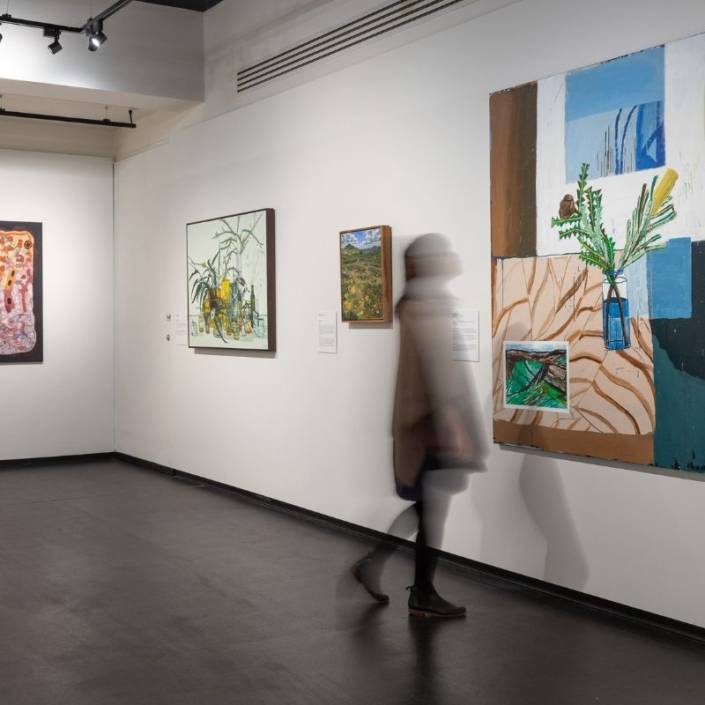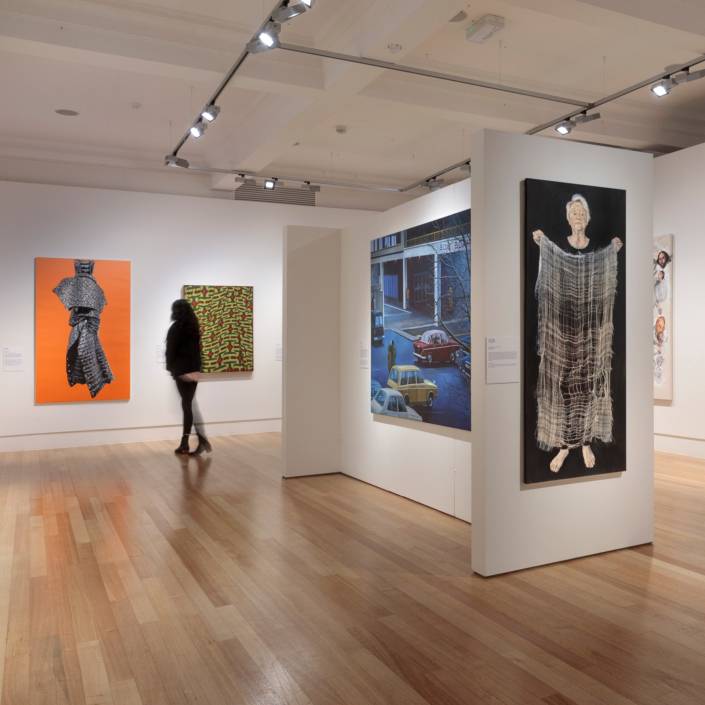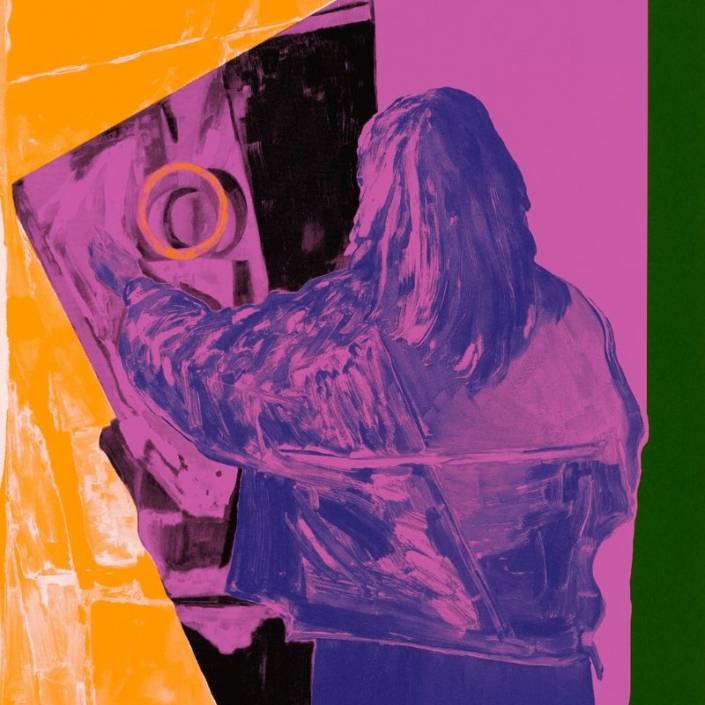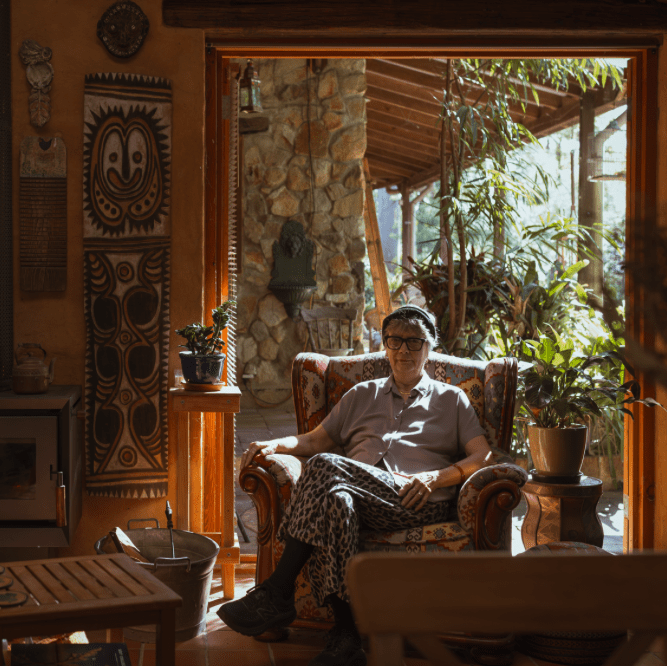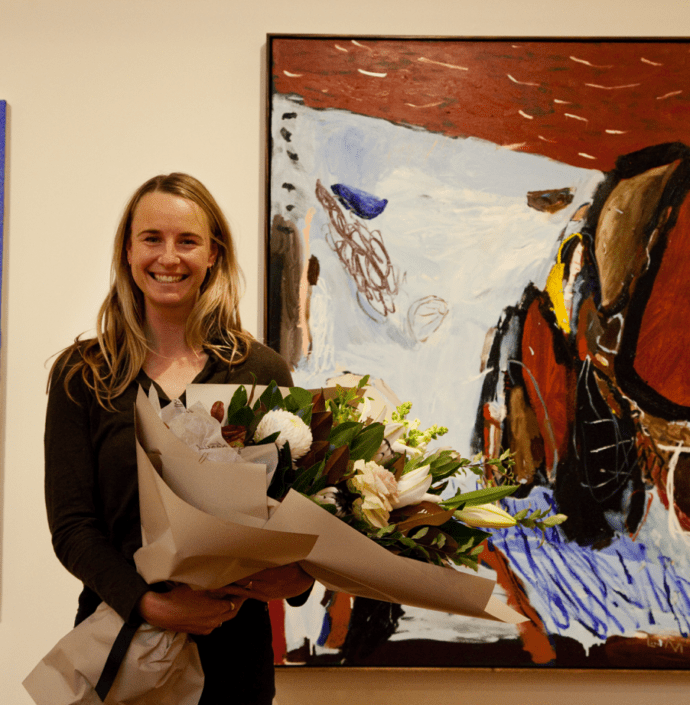Kylie Banyard: The foreseeable future
Kylie Banyard has spent years craving a better world. But her new work departs from these utopian yearnings to look at the future with fresh eyes.
Words: Andrew Frost
Photography: Zan Wimberley
IT’S BEEN APPARENT for a while that the future just isn’t what it used to be. In the face of mounting ecological crises in the natural world, from global warming to oceanic plastic pollution, to the crises of faith in democracy and the rise of authoritarian governments, the future can look bleak. This feeling is compounded by a fading memory of the utopian movements of the last century that sought to build a better world. Kylie Banyard is an artist who seeks to revive those utopian ideals and reinstate an enthusiasm for the possibility that we can think our way out of oblivion.
A PhD graduate of University of NSW Art & Design, Sydney, and now a lecturer at La Trobe University in Bendigo, Banyard has an exhibiting career that stretches back to the mid-2000s in a variety of group shows, with her first solo show at Sydney’s now-closed Ivan Dougherty Gallery in 2008. Since then she has established a solid commercial career alongside her research, and this year exhibits in one of the highest profile exhibitions of her career – the survey show The National 2019: New Australian Art – as well as a solo exhibition with her Sydney dealer, Galerie pompom.
“The work in the pompom show belongs to the same body of work, although as I’ve been working through this project over the last year or so, so my approach has been shifting,” says Banyard. “The new work has been made in response to research I’ve been doing on Black Mountain College [BMC], North Carolina – a utopian community [that dates] from the mid-20th century. One of the differences with this work is that for the first time I’ve had the chance to go deeper with the research. I travelled to North Carolina and visited one of the two sites of the school, local regional archives and a place called Black Mountain College Museum and Art Center.”
Banyard is deeply interested in the work of feminist theorist Donna Haraway and recently wrote that “what is required now is an ability to critically daydream our capacity to figure new ways of living in this world, in the here and now, in what [Haraway] calls the ‘thick present’”. Drawing on this, Banyard has developed a process of actively imagin- ing possible futures. “Through the artwork I’ve produced in the past, and like every other form of utopian imagining or futurism, I have spent years craving a world not here but somewhere over there, a hopeful and deeply utopian yearning for something else, something immeasurably better. However, I don’t desire this anymore, I don’t want to continue to look away, and in the wake of reading and listening to Haraway I can now see how problematic an approach this is.”
Banyard’s new paintings continue her interest in using archival imagery, but are now combined with her own imagery collected on research trips. “Since working with BMC it’s become a little more political,” she says. “I’m still attracted to the architecture, but as I spend more time working and teaching in art schools I’ve also become increasingly interested in the art school community as a subject. This is why I started painting people. I then turned my attention to the women in the images. I noticed, like all art schools, there were large numbers of women study- ing there so I started looking for accounts of the lived experience of women at BMC. I guess my research question became, ‘What was life like for women at BMC?’.”
Although she has worked in a variety of media including video, installation, and photography, Banyard ultimately describes herself as a painter. “I love the slow and sustained experience of making paintings,” she says. “I love how I learn about the topic or subject that interests me when I paint. And what that process reveals.”
KYLIE BANYARD EXHIBITS AT THE MUSEUM OF CONTEMPORARY ART AS PART OF THE NATIONAL 2019: NEW AUSTRALIAN ART, UNTIL 23 JUNE 2019. HER SOLO EXHIBITION BLUE RIDGE MOON SHOWS AT GALERIE POMPOM, SYDNEY, FROM 15 MAY TO 9 JUNE 2019.
RON ADAMS AND SAMANTHA FERRIS
Co-directors, Galerie pompom
“Kylie Banyard has been represented by Galerie pompom since 2012. She merges figurative and abstract painting in her own unique way. We’ve always loved her wonderful colour sense, and the technique with which she applies paint, with brush or aerosol, or both. This is Kylie’s fourth solo exhibition with the gallery and hence the prices of $2,500 to $8,000 are based upon the progression over this time. Kylie’s work has been acquired by collectors with quite eclectic collections; collectors who have both figurative and abstract works. Kylie’s work is popular with collectors interested in works that are a
bit more challenging in content. There is a lot to ponder and think about in the work, it is subject-heavy, often with a sense of motion and important activity. Yet there is an overriding optimism and sense of celebration, transmitted through colour and playfulness. That also greatly appeals. The works are infused with historical reference points and would resonate with a collector that has interest in art history, particularly experimental practice in the 1960s. There is also a sense that something new is being brought to the fore. These are the things that Kylie’s collectors relish and respond to in her work.”
BEC DEAN
Critic and curator
“Kylie Banyard’s practice is multi-modal, but grounded in traditional forms, so there is a sense of her work in installation and video emerging as extensions of her painting practice. The subjects of her work are often retrieved and recuperated from the past, particularly her focus on radical social experiments, architectures and ways of living of the 1960s and 1970s. Reframed aesthetically by Banyard, these historical ideas of utopia appear new and radical again, as we find ourselves societally aspiring to increasingly banal, middle-class, normative ideals. Mortgage included.
“While the use of archives and collections in contemporary art and by contemporary artists have punctuated practice from the late 20th century onwards, artists and cultural practitioners have increasingly challenged the linearity of patriarchal, Western art and cultural history and the institutions that have traditionally espoused them. Today you’ll find most major archives and museums encourage and commission projects by contemporary artists to engage with their collections, to consider them from different perspectives and through different lenses.
“The idea of seeing things differently is a very potent aspect of Banyard’s practice. There is a familiarity to the thingness she represents in her paintings, but they are somehow out of reach of the normative and elevated to another plane of perception.”
This article was originally published in Art Collector issue 88, APR – JUN 2019.


